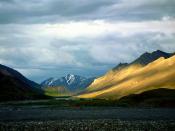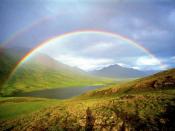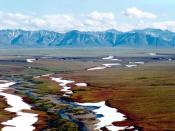The Environment or Oil?
The Arctic National Wildlife Refuge (ANWR) is known as the second largest in the National Wildlife Refuge System. The ANWR covers approximately 19.6 million acres of land in northeast Alaska. It is also a home to many animals and species that depend on this as a vital habitat for their survival. Many environmental preservationists believe that the ANWR is one of the nation's last true forms of wilderness remaining, and have even referred to it as the "American Serengeti" because of its wildlife and beautiful landscape (The Artic). The Alaska National Wildlife Refuge is controversial because it possibly contains large oil reserves that could help ease the reliance on foreign oil, but the importance of the land to the inhabitants and the wildlife has taken a greater priority. To allow the drilling in Artic National Wildlife Refuge would mean the destruction of one of the last great geographical areas.
The ANWR is one of the few remaining areas still untouched by humans in America.
The argument over whether or not to drill for oil in the Coastal Plain of Alaska's Artic National Wildlife refuge has lasted for more than fifteen years. The debate consists of those who are looking for the possibility of oil and gas in the isolated wildlife refuge versus those who feel that the land should be off limits for any development or research due to environmental demolition. The two sides are divided by the deep and difficult value differences. Most of the arguments regarding the ANWR deal with ecological, economic, political, and social issues. Each of these concerns is interrelated, making the repercussions of drilling even more negative and complicated (Federal).
In terms of the value of human economic needs, the environmentalists feel that the long-term need to preserve the land...


